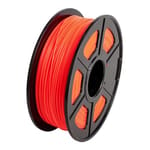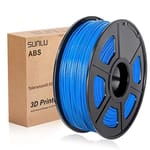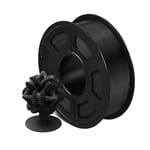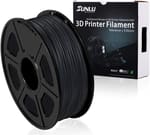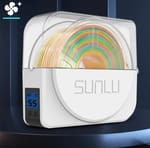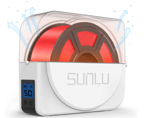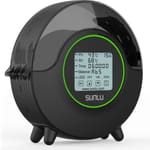Sunlu began selling filaments in 2013, and since then, their company has grown to 40 production lines, 41 inventions, and over 200 intellectual rights. Sunlu started in Zhuhai, China but has distributed its products, including filaments, resins, filament pens, filament dryers, and printers, all over the world. Their aim is to be like the “Sun” to “Light Up” the 3D printing world.
A few years after founding the company, Sunlu began to gain massive attention when they reduced their FDM filament dimensional tolerance to ±0.02 mm and launched the mini 3D printing pen. They have continued to be a reliable supplier of 3D printing supplies ever since.
The company is considered a mid-tier filament retailer. With nice filament tolerances and high print quality all at a competitive cost, their filaments are definitely worth checking out!
PLA
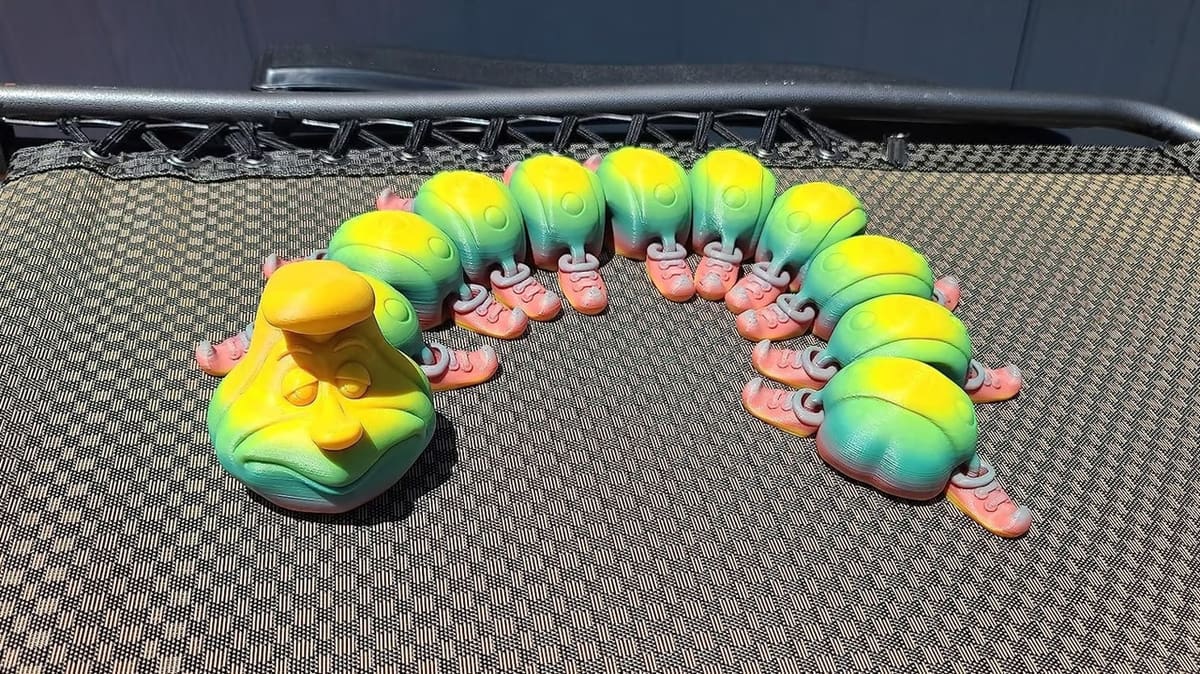
The most commonly used FDM filament, and the largest portion of Sunlu’s lineup, is PLA (polylactic acid). Generally, PLA requires a lower printing temperature than other FDM filaments, but it’s not the strongest nor most heat or water resistant filament. It makes a great general-use filament for fun, decorative, and even some functional prints.
Sunlu PLA comes in many variations that span from easily printable to high-performance. Members of the maker community report on the consistent printability and coloring of Sunlu products. Sunlu’s silk and rainbow PLA varieties are some fan favorites that produce stunning prints.
The primary drawback for Sunlu PLA is that it may need to be dried right out of the package, but 2 hours at 40 °C should do the trick. Keep in mind that the additives used in the different variations may change the ideal printing temperature. In case of any doubt, you should start with the temperature listed on the filament package.
- Colors: 25
- Recommended settings: Hot end 200-210 °C; optional heated bed 50-65 °C
- Sizes: 1.75 mm; 1, 5 kg
- Price: ~$24/kg for PLA; $12-$32/kg for variants
Variations
- Meta: The most unique of the filaments made by Sunlu, Meta requires one the lowest printing temperatures of filaments on the market – in the range of 185 to 195 °C – and comes in a unique macaron color palate. This filament has improved fluidity, for faster printing and gives a great smooth, glossy finish.
- PLA+: Sunlu’s improved PLA+ gives the maker a modified PLA with reportedly more temperature resistance, mechanical integrity, and improved dimensional accuracy, without sacrificing printability.
- Rainbow: With the same ease of printing as Sunlu’s PLA formulation, PLA rainbow comes in two striking color scheme options.
- Matte: This matte filament gives a smoother, non-reflective surface finish than standard PLA. Eight color options are available, and Sunlu claims the same ease of printing you can expect from traditional PLA.
- Silk: This silky PLA variation gives a beautiful shiny finish as a result of special additives. This blend requires a higher temperature than PLA and likely some tinkering to determine the best temperature for your printer.
- Silk Rainbow: Sunlu’s Silk Rainbow has the same beautiful color schemes as the Rainbow PLA, only with a silky, shiny finish.
- Wood Filament: This wood composite filament gives a great smooth surface feel with a woody texture and oder. This can generally be printed in the 205-215 °C range and comes with an impressive ±0.02 mm dimensional accuracy.
- Luminous: This glowing PLA filament contains phosphorescent additives that provide up to an hour of light in the dark after a sufficient charge in UV light. Sunlu’s Luminous also boasts an increased shine compared to other brands.
- Marble: Sunlu’s Marble PLA gives a uniquely textured white-stone appearance that can make your prints pass as marble sculptures. Some users recommend 220 °C print temperature for the first layer, then 210 °C for subsequent layers.
- Twinkling: This glitter-filled filament gives a uniquely sparkly print, but it’s only available in light blue.
- Carbon Fiber: This PLA/carbon fiber blend filament is by far the strongest PLA that Sunlu offers. While more difficult to print other PLA options, it’s easier than other engineering filaments.
- Recycled: Sunlu attempts to minimize how much of its plastic ends up in landfills by reusing any plastic that doesn’t make it onto the rolls during production. This recycled PLA option comes at a reduced price but lacks the replacement guarantee.
PETG
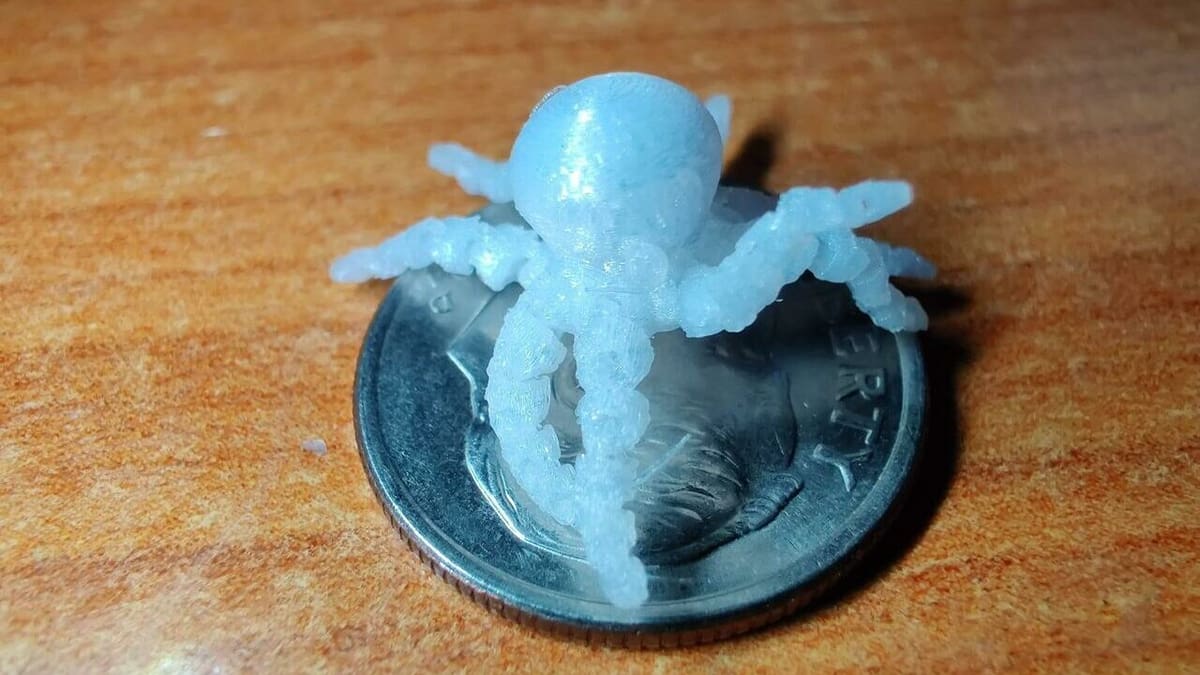
While PETG (glycol-modifed polyethylene terephthalate) is somewhat more difficult to print compared to PLA, the end parts are mechanically stronger and more resistant to temperature. If you’re looking for a filament that holds up better outdoors or in weight-bearing applications, PETG is a good choice for you. Keep in mind that the filament may lose some strength if it encounters excessive moisture, so store your PETG rolls in a dry box if possible.
Sunlu PETG is a great choice if you’re looking for a cost-effective PETG that you can rely on. Although it’s a filament that requires experimenting to find the ideal printing parameters for your printer, once it’s locked, you’ll be able to consistently produce strong pieces on demand.
Community feedback on Sunlu’s PETG includes the need to dry the filament before each print or else inadequate first-layer adhesion or bubbling on the surface may become an issue. It’s also been suggested to avoid printing this filament too fast, especially the initial layers.
- Colors: 9
- Recommended settings: Hot end 220-250 °C; heated bed 75-85 °C
- Sizes: 1.75 mm; 1 kg
- Price: ~$24/kg for PETG; ~$12/kg for variants
Variations
- Recycled: Similar to the recycled PLA, Sunlu recycles any PETG that doesn’t make it onto the rolls during production. This recycled PETG option comes at a reduced price, but similar to their recycled PLA, it lacks the replacement guarantee.
ABS
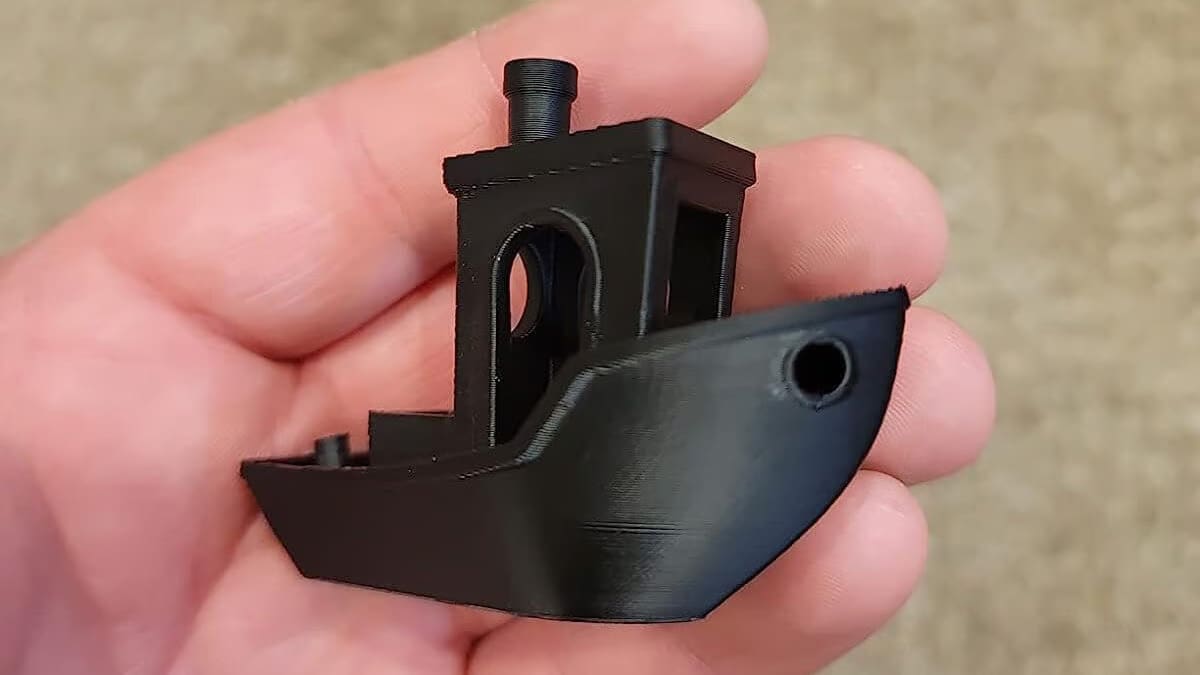
ABS (acrylonitrile butadiene styrene) is one of the strongest filaments that’s widely available, but it can be finicky to print. Without proper temperature control, including the use of an enclosure, ABS is highly prone to warping. However, once dialed in, ABS can produce a relatively high-temperature resistance that’s great for electronic cases and other structural prints.
Members of the 3D printing community consider Sunlu’s ABS formulation to be not only inexpensive but also one of the best ABS filaments on the market. Sunlu’s consistency can also be counted on for their ABS line. While ABS may not be generally recommended to someone just getting started with 3D printing, Sunlu has set out to change that with their Easy ABS (see more on that filament below).
- Colors: 8
- Recommended settings: Hot end 250-260 °C; heated bed 80-120 °C
- Sizes: 1.75 mm; 1 kg
- Price: ~$18/kg for ABS; $12-25/kg for variants
Variations
- Easy ABS: Sunlu claims that their novel acrylonitrile butadiene styrene ratio in the Easy ABS filament has created a significantly more printable ABS without sacrificing the material’s functional properties. Easy ABS’ advantages include a lower printing temperature and no enclosure necessary. Many users would agree that it’s easier to print, but it might not be a bad idea to use an enclosure, just to be on the safe side.
- Recycled: In addition to PLA and PETG, Sunlu offers a recycled ABS option made from production waste. Like the others, it comes at a reduced price but lacks the replacement guarantee.
ASA
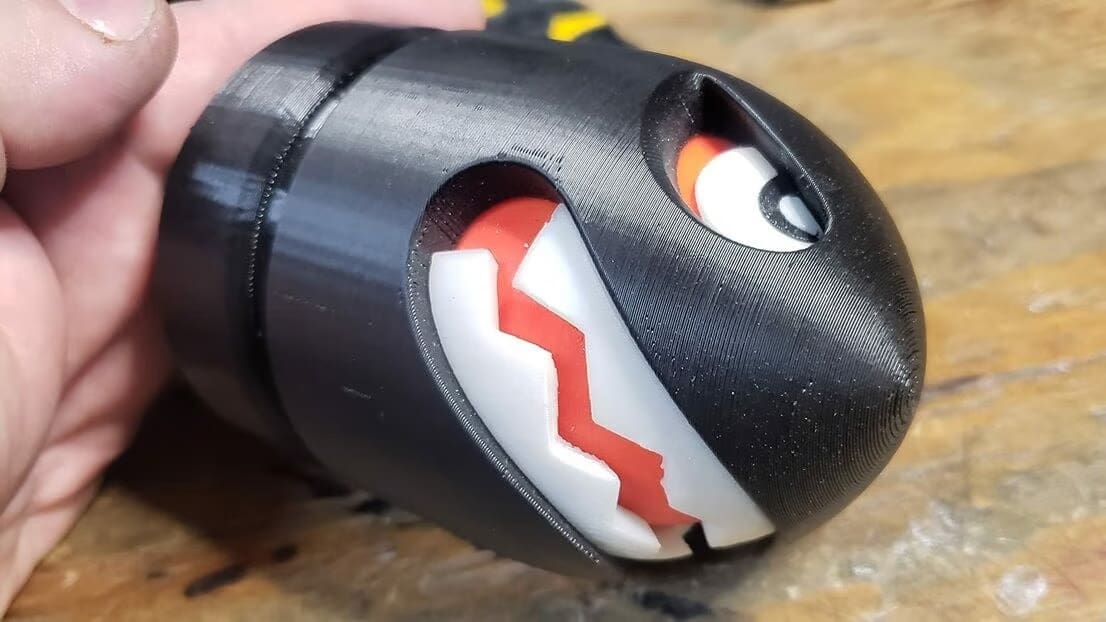
ASA (acrylonitrile styrene acrylate) is the easier-to-print alternative to ABS that many regard as a complete replacement for ABS in your filament library. It’s perfect for pieces that need durability and resistance to sunlight, such as planters and car accessories.
Community members declare Sunlu ASA to be a great value for the price considering it prints very easily. The only primary drawback is that it may not be as widely available as other options like Sunlu’s Easy ABS. While ASA is slightly more expensive than ABS, it may be worth it to guarantee the lifespan of your parts.
- Colors: 6
- Recommended settings: Hot end 245-255 °C; heated bed 80-120 °C
- Sizes: 1.75 mm; 1 kg
- Price: ~$27/kg
TPU
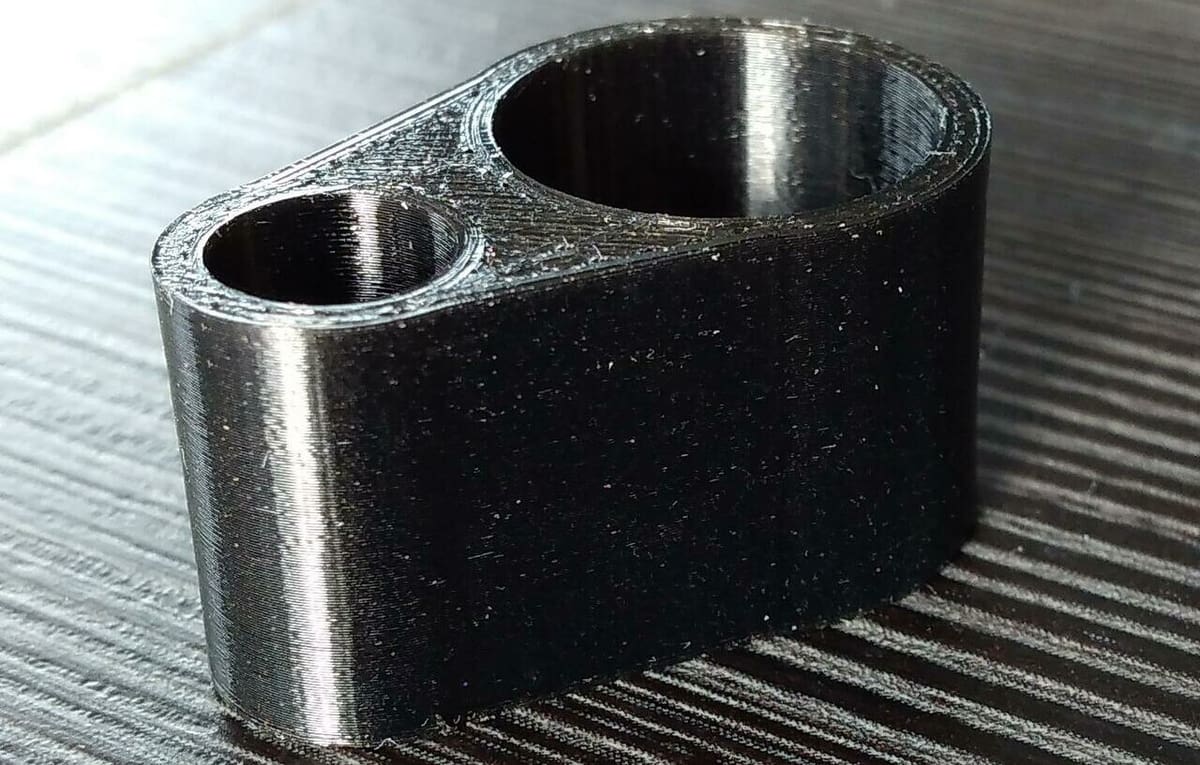
TPU (thermoplastic polyurethane) sets itself apart from the other common filament options for being soft and flexible. Bear in mind that flexible filaments can be tricky to get right, especially with Bowden extruders, as the filament tensioner must be finely tuned and the nozzle can become easily clogged due to under-extrusion and charring of the sticky filament.
Sunlu’s TPU has a 95A shore hardness, which is pretty average for a flexible filament. Sunlu enthusiasts note that Sunlu TPU has a better-looking and shinier surface finish than other TPUs on the market. Most makers find success with small prints, which are readily squishable.
- Colors: 7
- Recommended settings: Hot end 205-230 °C; optional heated bed
- Sizes: 1.75 mm; 0.5 kg
- Price: $36-$40/kg
Filament Dryers
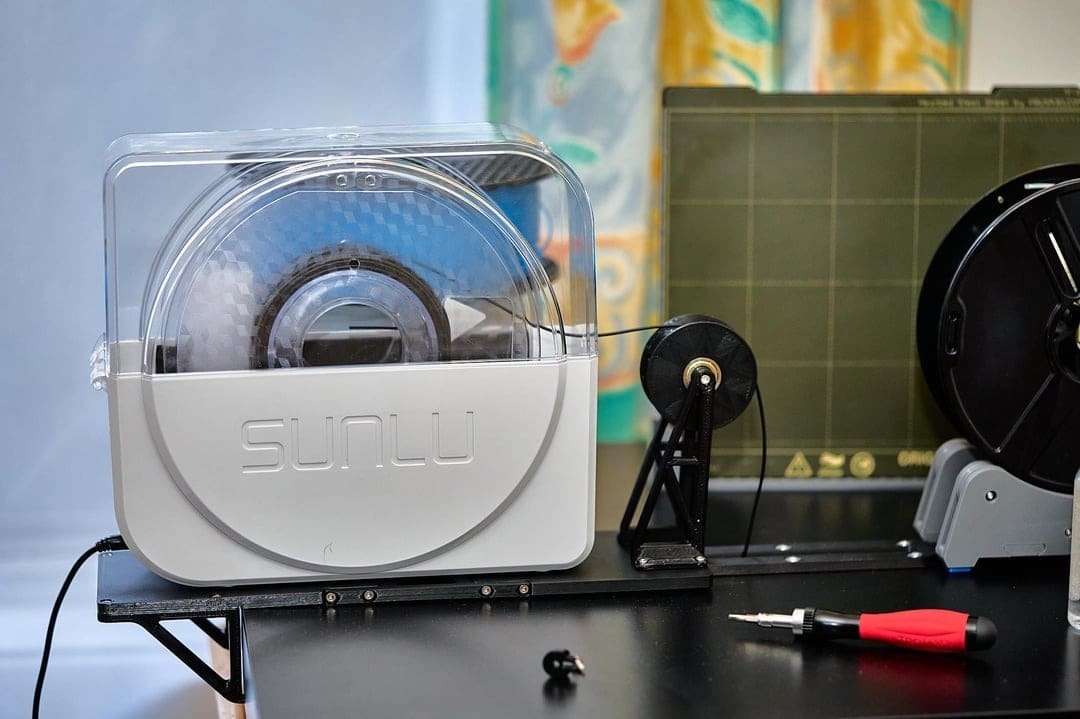
Sunlu has always been known for their 3D printing accessories, and the Filadryer line has been no exception. One of the largest problems for 3D printing enthusiasts has always been filaments’ tendency to absorb water, causing everything from surface imperfections to failures. Sunlu has a few solutions to offer:
Filadryer S1
The original Filadryer S1, priced at around $40, includes a temperature controller and timer. It works well for both initial drying and temperature holding during prints. You’ll need to know your desired settings for each filament, and the spool does need to meet some basic size and width restrictions.
Filadryer S1 Plus
The S1 Plus comes with all the same features but also has a fan installed to prevent overheating and aid in water removal.
Filadryer S2
You can also grab the newest S2 filament dryer from Sunlu for approximately $80. This smart little box comes with presets for different types of filaments, as well as the ability to measure relative humidity inside the chamber. While the S2 has a larger footprint compared to the S1, it includes a fan, a larger touch screen, and more programmable features. Spooling the filament through the top can be somewhat clumsy, but all of the best intentions are there.
License: The text of "Sunlu Filament Buyer’s Guide" by All3DP is licensed under a Creative Commons Attribution 4.0 International License.
CERTAIN CONTENT THAT APPEARS ON THIS SITE COMES FROM AMAZON. THIS CONTENT IS PROVIDED ‘AS IS’ AND IS SUBJECT TO CHANGE OR REMOVAL AT ANY TIME.

